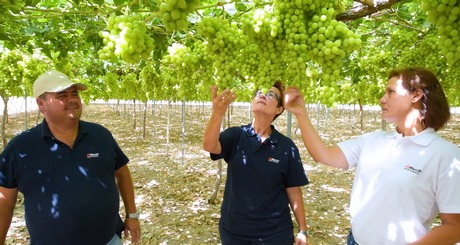In this seven-part series, Alltech Crop Science looks at esca and natural-based solutions for the disease
Esca, a wood disease affecting grapes all over the world, is one of the biggest modern threats to grape production. Esca is a complex disease involving several different fungi. It attacks the main vine of the plant and can destroy it within a few days; there is no questioning the unstoppable pace at which this disease progresses.

Esca is one of the oldest-known diseases to afflict grape vines, having been noted by the Greeks and Romans and damaging vineyards quite heavily in the early 1900s. In twentieth-century France, more than 5 percent of vines were killed by esca each year. Because the disease grows at a slow but progressive pace, even the larger, more well-established vineyards could be totally destroyed in 15 to 20 years.
Esca was first successfully controlled in 1903, when sodium arsenite was used as an insecticide on grapes and quickly proved its ability to limit esca and other wood diseases. In fact, thanks to sodium arsenite use, research on the disease effectively stopped in 1920 — only to begin again in 1980, when a potential ban on the product was discussed.
Sodium arsenite, which was noted as being highly toxic and carcinogenic in 1987, was banned in France in 2001 and in the rest of Europe in 2003. Subsequently, grape growers have seen a re-emergence of esca, and since 2001, 6–7 percent of vines must be replaced annually. Additionally, along with the traditional form of esca, a new form appeared — an “apoplectic” form, which can cause the vine to dry up entirely within the first few hours of showing symptoms.
Today, there are no registered chemical or biological solutions for mitigating this disease. Its complexity makes it hard to find traditional solutions for and to study.
Esca impacts producers economically on multiple levels: the use of prophylactic measures (of debatable efficacy) can increase costs, while pulled-out vines, reduced yields and replantation costs can reduce income.
France, for example, estimates that 11 percent of the nation’s total number of grape vines are non-productive as a result of esca. Between 2003 (when sodium arsenate was prohibited there) and 2007, Spain saw the number of affected vineyards grow from 1.8 percent to 10.5 percent. This rate continues its upward trend — and in some regions, such as in central and southern Italy, epidemiological studies carried out in Tuscany, Marche, Abruzzi, Apulia and Sicily showed that the incidence of esca has reached an extreme 60–80 percent in older vineyards.
Alltech Crop Science explores natural-based solutions for esca
Alltech Crop Science, a global leader in natural-based, innovative solutions, is exploring alternative programmes to help farmers protect their vines. Our global research centres and alliances, particularly in Spain, are leading the charge to solve this problem — and have already seen promising initial results.
For more information, visit go.alltech.com/your-crop-science-partner.
